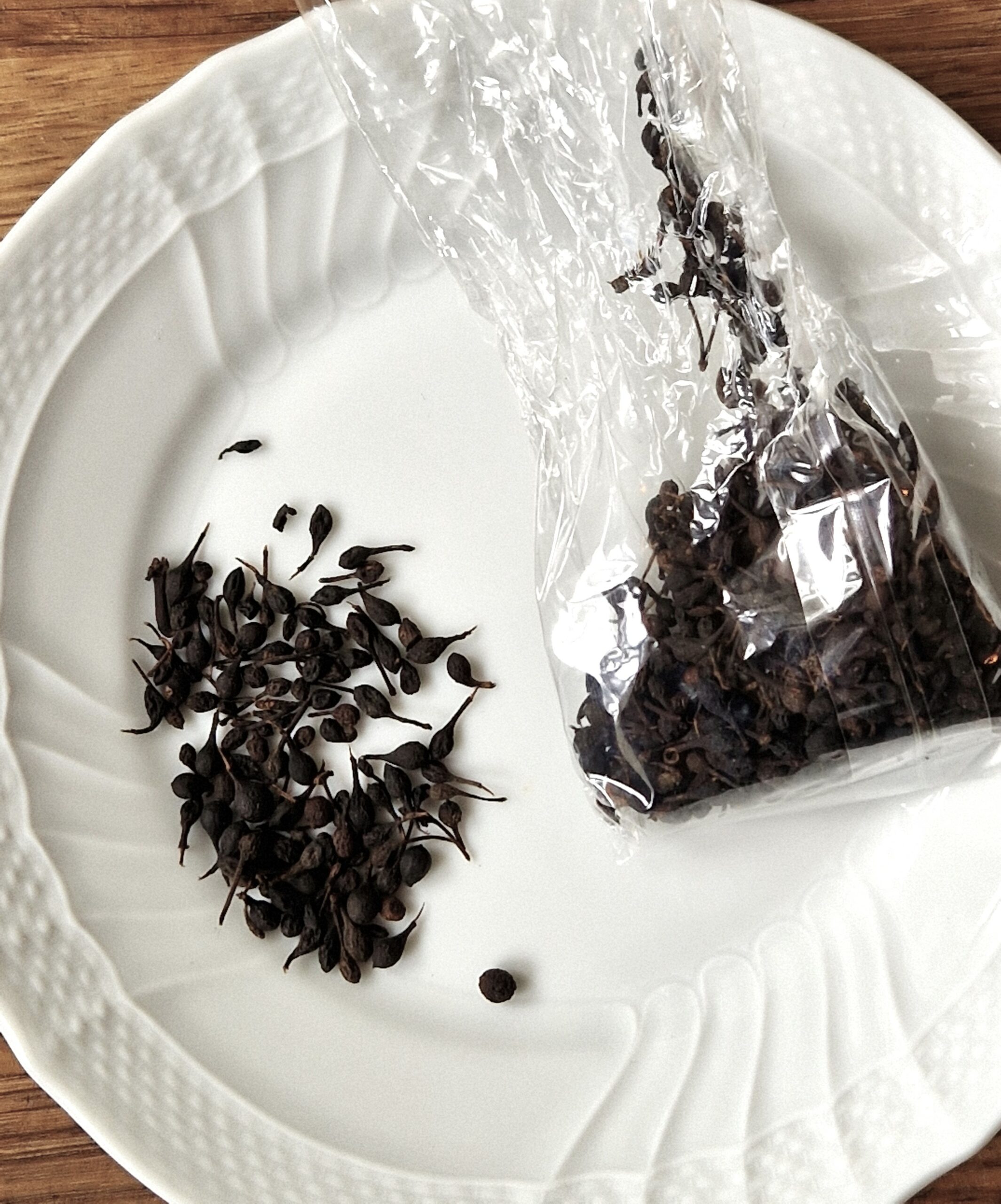
On a recent trip to our local coffee roaster, La Brûlerie du Béarn, I discovered a new spice that has since become a bit of a fetish for me. It’s wild black pepper from Madagascar, and if you are saying “yeah, black pepper, whatever”, I assure you that this wild black pepper has nothing to do with the mild, farmed variety that we all know. Wild black pepper is spicy but not hot, and aromatic to a degree that makes other black pepper seem very tame. When ground in a pepper meal, wild black pepper gives off intense aromas of wood, resin, menthol and fresh fruit. Unlike regular black pepper, which blends into the background of most dishes, this pepper is formidably present, demanding to be taken into consideration in the construction of the flavor profile of the dish. It was a revelation for me.
Visually, the main difference between regular wild black pepper is that each wild pepper berry has a little tail, a tiny piece of its stem that remains attached after it is gathered.
Although it can be used as an everyday substitute for other black peppers (as I do), it invites experimentation to discover new flavor parings. I found a little grind over raw oysters, with a squeeze of lemon, to be excellent. I also found it paired very well with sauteed baby violet artichokes, in place of the red chili flake I would normally use. The wild pepper lends an almost bayleaf-like flavor. And ground over a simple salad it is exceptional; you begin to see what the whole table-side offer of ground pepper on your salad is about.
Sophie at La Brûlerie du Béarn says that she gets her “poivre sauvage noir de Madagascar” though the a friend who lives in Madagascar, who carries it (and vanilla beans) back to Orthez each time they come to visit family. Apparently, it grows on a vine that covers many trees in tropical forests of Madagascar. It is hand harvested by local communities, often at more than 20 meters above the forest floor, and is very fragile, so requires exceptional care during drying. All this explains its high price. However, I find that a little goes a long way, so it works out to be not that much more expensive than high end black peppers, like tellicherry pepper from India. A paquet of 25 grams that I purchased for 2.50 euros has lasted several months.